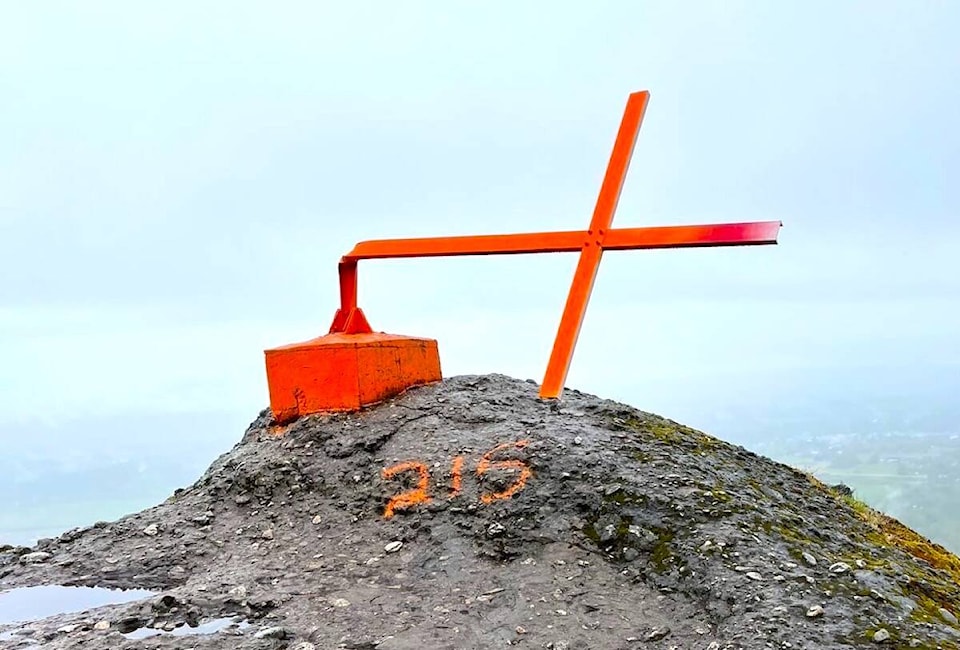An iconic — and controversial — cross overlooking Cowichan Bay from a towering rocky bluff near Duncan is coming down for good.
Landowners made that announcement today in the wake of the recent discovery the towering metal cross had been bent more than 90 degrees and possibly even cut.
It’s not known exactly when the latest destruction occurred but the Nature Conservancy of Canada, which owns the Mount Tzouhalem property upon which it sits, became aware of it on May 2.
“The Nature Conservancy of Canada is increasingly concerned about the ongoing vandalism at the cross site,” Conservancy spokesperson Lesley Neilson said. “We are a land conservation organization that is focussed on protecting and restoring natural areas. We are not prepared to accept the liability posed by this contentious public landmark and will be removing it from the site.”
It’s the second time this year that the landmark has made headlines due to suspicious activities.
In February the metal structure was mysteriously returned to its plinth after it had been covertly removed the previous July.
SEE RELATED: Landmark cross mysteriously reappears atop Mount Tzouhalem
It’s not known who took it in the first place or who it was that re-installed it.
Following its return in February, the historically white cross had been painted in a rainbow motif briefly, with some speculating it was a nod to gender and sexual diversity, before being repainted bright orange with “215” painted alongside on the rocks, an apparent reference to the number of unmarked graves found at a residential school in Kamloops.
Again, it’s not known who performed either paint job.
A wooden cross had sat on the bluff atop Mount Tzouhalem since the 1960s after being carried up the mountain as part of a Good Friday stations of the cross Catholic pilgrimage. A number of wooden crosses were replaced as they were vulnerable to weather and vandals. Eventually, a steel cross was installed in the late 1980s.
That metal cross fell during a windstorm in fall 2014, but it was recovered and repaired and returned to its location in January 2015. It was cut off from its base in mid July 2021 in an apparent act of vandalism.
The landmark, a destination for many hikers, holds different meanings for different people with many questioning its appropriateness.
Opinions are mixed — even within the area’s First Nations communities and within the region’s religious communities — as to whether the cross represents oppression, salvation, or something else altogether, and whether there should be any type of landmark, or if the cross should be left to sit atop the mountain, or if it should be replaced with a traditional First Nations symbol.
sarah.simpson@cowichanvalleycitizen.com
Like us on Facebook and follow us on Twitter



